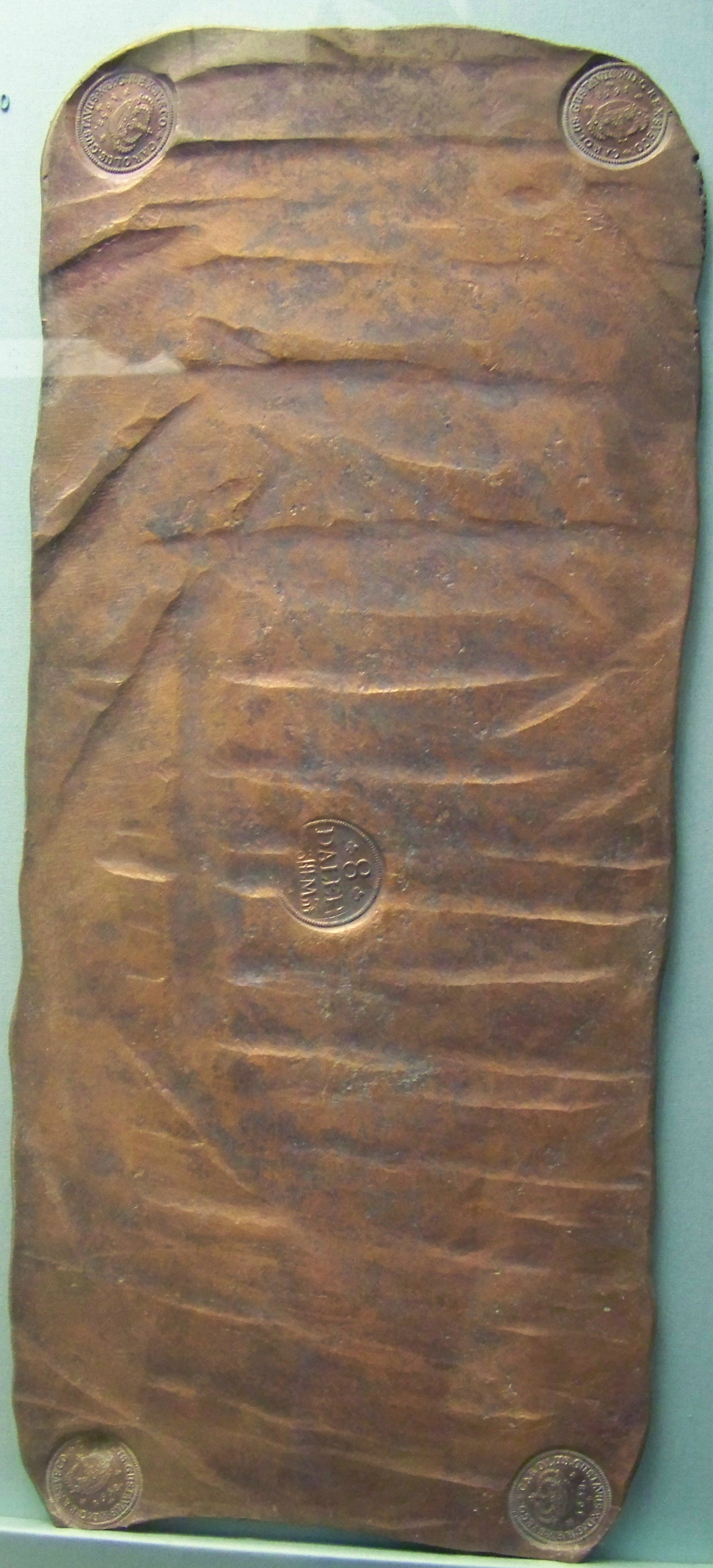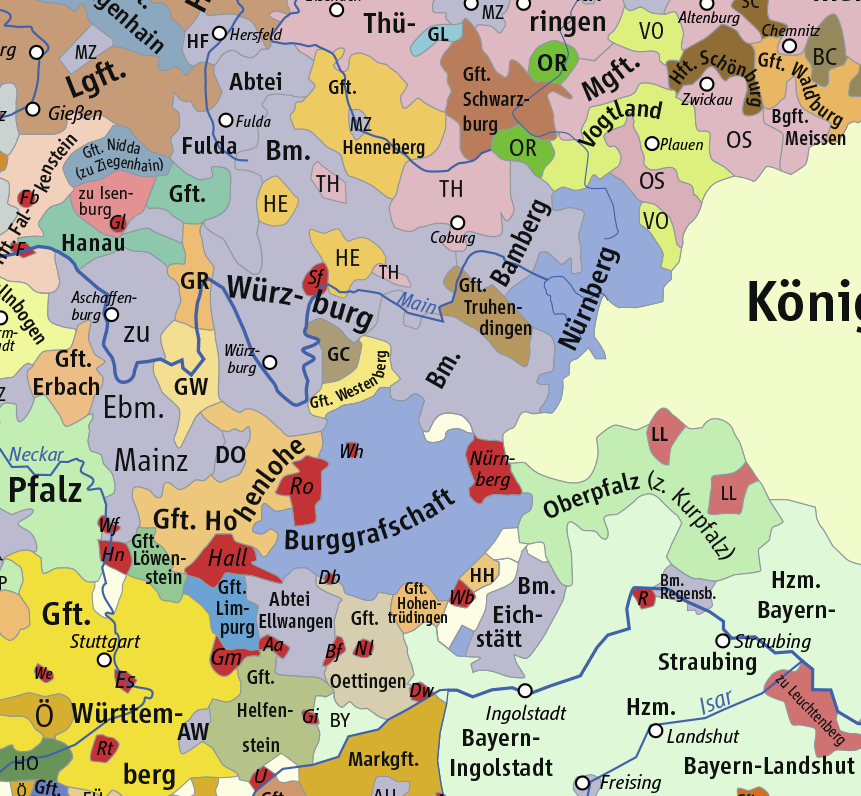|
Princess Dorothea Of Schleswig-Holstein-Sonderburg-Beck
Dorothea of Schleswig-Holstein-Sonderburg-Beck, known also as ''Dorothea von Holstein-Beck'' and ''Dorothea von Ziedewitz'', (24 November 1685 – 25 December 1761), was a German princess of the House of Oldenburg and by marriage Margravine of Brandenburg-Bayreuth-Kulmbach. Family She was the eldest of the thirteen children of Frederick Louis, Duke of Schleswig-Holstein-Sonderburg-Beck, by his wife, Princess Luise Charlotte of Schleswig-Holstein-Sonderburg-Augustenburg (1658-1740). Of all her siblings, only seven survived to adulthood: Frederick William II, who inherited Beck after succeeding his father; Charles Louis, later husband of the Countess Orzelska and ruler of Beck after the death of his nephew; Philipp Wilhelm, who died unmarried in 1729; Luise Albertine, by marriage von Seeguth-Stanislawsky; Peter August, who years later inherited Beck from his older brother; Sophie Henriette, Burgravine and Countess of Dohna-Schlobitten; and Charlotte, Abbess of Quedlinburg. ... [...More Info...] [...Related Items...] OR: [Wikipedia] [Google] [Baidu] |
House Of Oldenburg
The House of Oldenburg is a Germans, German dynasty with links to Denmark since the 15th century. It has branches that rule or have ruled in Denmark, Iceland, Greece, Norway, Russia, Sweden, the United Kingdom, Duchy of Schleswig, Schleswig, Duchy of Holstein, Holstein, and Grand Duchy of Oldenburg, Oldenburg. The current Queen of Denmark, King of Norway and King of the United Kingdom, as well as the former King of Greece, are all patrilineality, patrilineal descendants of the House of Glücksburg, Glücksburg branch of this house. The dynasty rose to prominence when Christian I of Denmark, Count Christian I of Oldenburg was elected as King of Denmark in 1448, of Norway in 1450 and of Sweden in 1457. The house has occupied the Danish throne ever since. History Marriages of medieval counts of Oldenburg paved the way for their heirs to become kings of various Scandinavian kingdoms. Through marriage with a descendant of King Valdemar I of Sweden and of King Eric IV of Denmark, a ... [...More Info...] [...Related Items...] OR: [Wikipedia] [Google] [Baidu] |
Alexander Ferdinand, 3rd Prince Of Thurn And Taxis
, title = Prince of Thurn and Taxis , image = Alexander Ferdinand von Thurn und Taxis.jpg , caption = , reign = 8 November 1739 – 17 March 1773 , reign-type = Period , coronation = , predecessor = Anselm Franz , successor = Karl Anselm , succession = Prince of Thurn and Taxis , spouse = Margravine Sophie Christine of Brandenburg-BayreuthPrincess Charlotte Louise of LorrainePrincess Maria Henriette Josepha of Fürstenberg-Stühlingen , issue = Princess Sophie ChristineKarl Anselm, 4th Prince of Thurn and TaxisPrincess Luise Auguste CharlottePrince Friedrich AugustPrince Ludwig Franz Princess Maria TheresiaPrincess JosephinePrince Heinrich AlexanderPrince Franz JosephPrincess Maria Anna JosephaPrincess Marie Elisabetha AlexandrinaPrince Maximilian Joseph , house =House of Thurn and Taxis , father = Anselm Franz, 2nd Prince of Thurn and Taxis , mother = Maria Ludovika Anna Franziska, ... [...More Info...] [...Related Items...] OR: [Wikipedia] [Google] [Baidu] |
Läckeby
Läckeby is a locality situated in Kalmar Municipality, Kalmar County Kalmar County () is a county or '' län'' in southern Sweden. It borders the counties of Kronoberg, Jönköping, Blekinge and Östergötland. To the east in the Baltic Sea is the island Gotland. The counties are mainly administrative units. G ..., Sweden with 847 inhabitants in 2010. References External links Populated places in Kalmar County Populated places in Kalmar Municipality {{Kalmar-geo-stub ... [...More Info...] [...Related Items...] OR: [Wikipedia] [Google] [Baidu] |
Swedish Riksdaler
The svenska riksdaler () was the name of a Swedish coin first minted in 1604. Between 1777 and 1873, it was the currency of Sweden. The daler, like the dollar,''National Geographic''. June 2002. p. 1. ''Ask Us''. was named after the German Thaler. The similarly named Reichsthaler, rijksdaalder, and rigsdaler were used in Germany and Austria-Hungary, the Netherlands, and Denmark-Norway, respectively. ''Riksdaler'' is still used as a colloquial term for Sweden's modern-day currency. History Penning accounting system The ''daler'' was introduced in 1534. It was initially intended for international use and was divided into 4 marks and then a mark is further subdivided into 8 öre and then an öre is further subdivided into 24 pennings. In 1604, the name was changed to ''riksdaler'' ("daler of the realm", c.f. Reichsthaler). In 1609, the riksdaler rose to a value of 6 mark when the other Swedish coins were debased but the riksdaler remained constant. From 1624, daler were issued ... [...More Info...] [...Related Items...] OR: [Wikipedia] [Google] [Baidu] |
Kalmar
Kalmar (, , ) is a city in the southeast of Sweden, situated by the Baltic Sea. It had 36,392 inhabitants in 2010 and is the seat of Kalmar Municipality. It is also the capital of Kalmar County, which comprises 12 municipalities with a total of 236,399 inhabitants (2015). Kalmar is the third largest urban area in the province and cultural region of Småland. From the thirteenth to the seventeenth centuries, Kalmar was one of Sweden's most important cities. Between 1602 and 1913 it was the episcopal see of Kalmar Diocese, with a bishop, and the Kalmar Cathedral from 1702 is an example of classicistic architecture. It became a fortified city, with the Kalmar Castle as the center. After the Treaty of Roskilde in 1658, Kalmar's importance diminished, until the industry sector was initiated in the 19th century. The city is home to parts of Linnaeus University. The city plays host to the Live at Heart festival, one of Sweden’s largest musical showcase events. Kalmar is adjacent to ... [...More Info...] [...Related Items...] OR: [Wikipedia] [Google] [Baidu] |
Lewenhaupt (other)
Lewenhaupt is the name of an old Swedish noble family and may refer to: * Gustaf Adolf Lewenhaupt (1619–1656), Swedish soldier * Adam Ludwig Lewenhaupt (1659–1719), Swedish general * Charles Emil Lewenhaupt (1691–1743), Swedish general * Wilhelmina Bonde, née Lewenhaupt (1817–1899), Swedish courtier * Carl Lewenhaupt Count Carl Lewenhaupt (19 March 1835 – 10 December 1906) was a Swedish diplomat and politician, who was Minister for Foreign Affairs from 1889 to 1895. Early life Lewenhaupt was born on 19 March 1835 at Herrevad Abbey in Klippan Municipa ... (1835–1906), Swedish diplomat and politician * Carl Gustaf Sixtensson Lewenhaupt (1879–1962), Swedish horse rider and modern pentathlete * Carl Gustaf Moritz Thure Lewenhaupt (1884–1935), Swedish horse rider who competed in the 1920 Summer Olympics * Carl Adam Lewenhaupt (1947–2017), Swedish count {{disambig ... [...More Info...] [...Related Items...] OR: [Wikipedia] [Google] [Baidu] |
Bayreuth
Bayreuth (, ; bar, Bareid) is a town in northern Bavaria, Germany, on the Red Main river in a valley between the Franconian Jura and the Fichtelgebirge Mountains. The town's roots date back to 1194. In the 21st century, it is the capital of Upper Franconia and has a population of 72,148 (2015). It hosts the annual Bayreuth Festival, at which performances of operas by the 19th-century German composer Richard Wagner are presented. History Middle Ages and Early Modern Period The town is believed to have been founded by the counts of Andechs probably around the mid-12th century,Mayer, Bernd and Rückel, Gert (2009). ''Bayreuth – Tours on Foot'', Heinrichs-Verlag, Bamberg, p.5, . but was first mentioned in 1194 as ''Baierrute'' in a document by Bishop Otto II of Bamberg. The syllable ''-rute'' may mean ''Rodung'' or "clearing", whilst ''Baier-'' indicates immigrants from the Bavarian region. Already documented earlier, were villages later merged into Bayreuth: Seulbitz (in 1 ... [...More Info...] [...Related Items...] OR: [Wikipedia] [Google] [Baidu] |
Margrave Of Bayreuth
The Principality of Bayreuth (german: Fürstentum Bayreuth) or Margraviate of Brandenburg-Bayreuth (''Markgraftum Brandenburg-Bayreuth'') was an immediate territory of the Holy Roman Empire, ruled by a Franconian branch of the Hohenzollern dynasty. Since Burgrave Frederick VI of Nuremberg was enfeoffed with the Margraviate of Brandenburg in 1415/17, the Hohenzollern princes transferred the margravial title to their Franconian possessions, though the principality never had been a march. Until 1604 they used Plassenburg Castle in Kulmbach as their residence, hence their territory was officially called the Principality of Kulmbach or Margraviate of Brandenburg-Kulmbach until the Empire's dissolution in 1806. Geography The Kulmbach-Bayreuth principality arose from the northern uplands (''Oberland'') of the former Burgraviate of Nuremberg, while the southern lowlands (''Unterland'') formed the Principality of Ansbach. The final border demarcation was settled by the 1541 House ... [...More Info...] [...Related Items...] OR: [Wikipedia] [Google] [Baidu] |
Altenberg, Saxony
Altenberg () is a town in the Sächsische Schweiz-Osterzgebirge district, in Saxony, Germany. Geography The town is situated in the Ore Mountains, 32 km south of Dresden, and 15 km northwest of Teplice, Czech Republic. The village of Zinnwald-Georgenfeld registered the lowest annual mean temperature (4.9 °C) of all inhabited places in Germany during the period 1961–1990. Additionally, it also holds the German record for the highest amount of precipitation recorded in one day, 312 mm. The highest snow depth ever recorded was 163 cm in 2005. Municipal divisions The town Altenberg consists of the following ''Ortschaften'' or municipal divisions:Hauptsatzung der Stadt Altenberg § 18, June 2021. *Altenberg (incl. [...More Info...] [...Related Items...] OR: [Wikipedia] [Google] [Baidu] |
Bamberg
Bamberg (, , ; East Franconian: ''Bambärch'') is a town in Upper Franconia, Germany, on the river Regnitz close to its confluence with the river Main. The town dates back to the 9th century, when its name was derived from the nearby ' castle. Cited as one of Germany's most beautiful towns, with medieval streets and Europe's largest intact old city wall, the old town of Bamberg has been a UNESCO World Heritage Site since 1993. From the 10th century onwards, Bamberg became a key link with the Slav peoples, notably those of Poland and Pomerania. It experienced a period of great prosperity from the 12th century onwards, during which time it was briefly the centre of the Holy Roman Empire. Emperor Henry II was also buried in the old town, alongside his wife Kunigunde. The town's architecture from this period strongly influenced that in Northern Germany and Hungary. From the middle of the 13th century onwards, the bishops were princes of the Empire and ruled Bamberg, overseeing the c ... [...More Info...] [...Related Items...] OR: [Wikipedia] [Google] [Baidu] |
Altendorf, Upper Franconia
Altendorf is a community in the Upper Franconian district of Bamberg, Bavaria, Germany. Geography Altendorf lies in the Oberfranken-West (Upper Franconia West) Region. Constituent communities The namesake centre of Altendorf has 1,544 inhabitants while the outlying amalgamated centre of Seußling (or Seussling) has 542 (as of 1 January 2003). The community also has two traditional rural land units, known in German as ''Gemarkungen'', also named Altendorf and Seußling (it is traditional for a ''Gemarkung'' to be named after a town or village lying nearby). History Before Secularization, Altendorf belonged to the High Monastery at Bamberg. Since the '' Reichsdeputationshauptschluss'' of 1803, the community has belonged to Bavaria. In the course of administrative reform in Bavaria, today's community came into being under the ''Gemeindeedikt'' (“Community Edict”) of 1818. Many finds from Celtic times point to early settlement. While Altendorf was first mentioned as a S ... [...More Info...] [...Related Items...] OR: [Wikipedia] [Google] [Baidu] |



